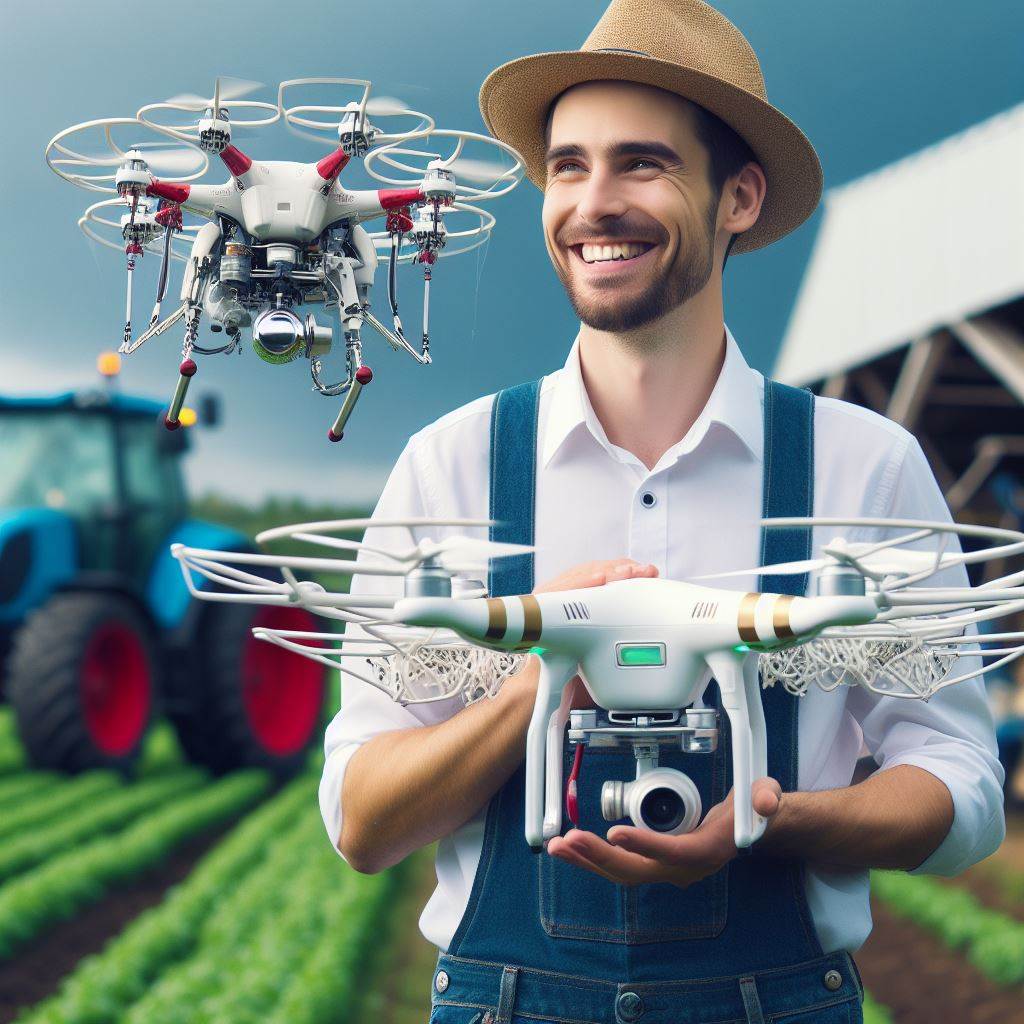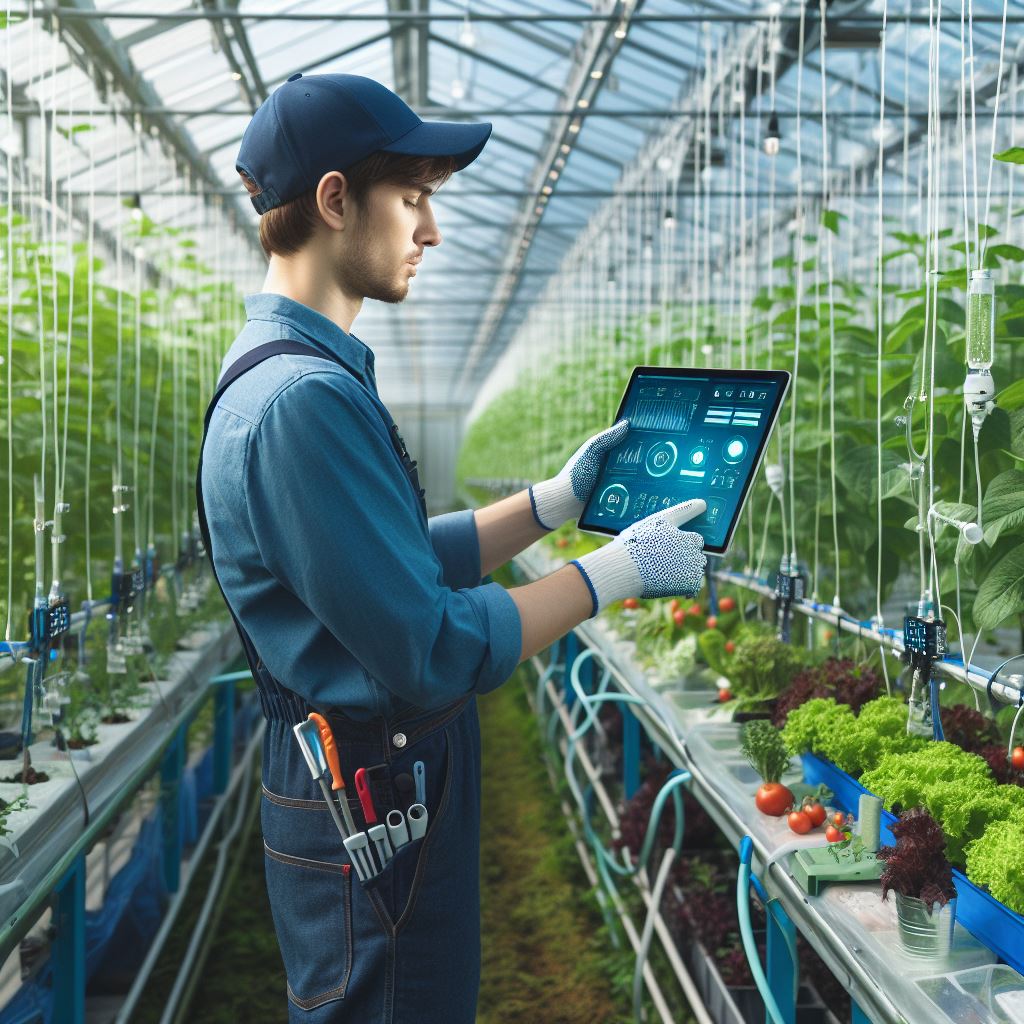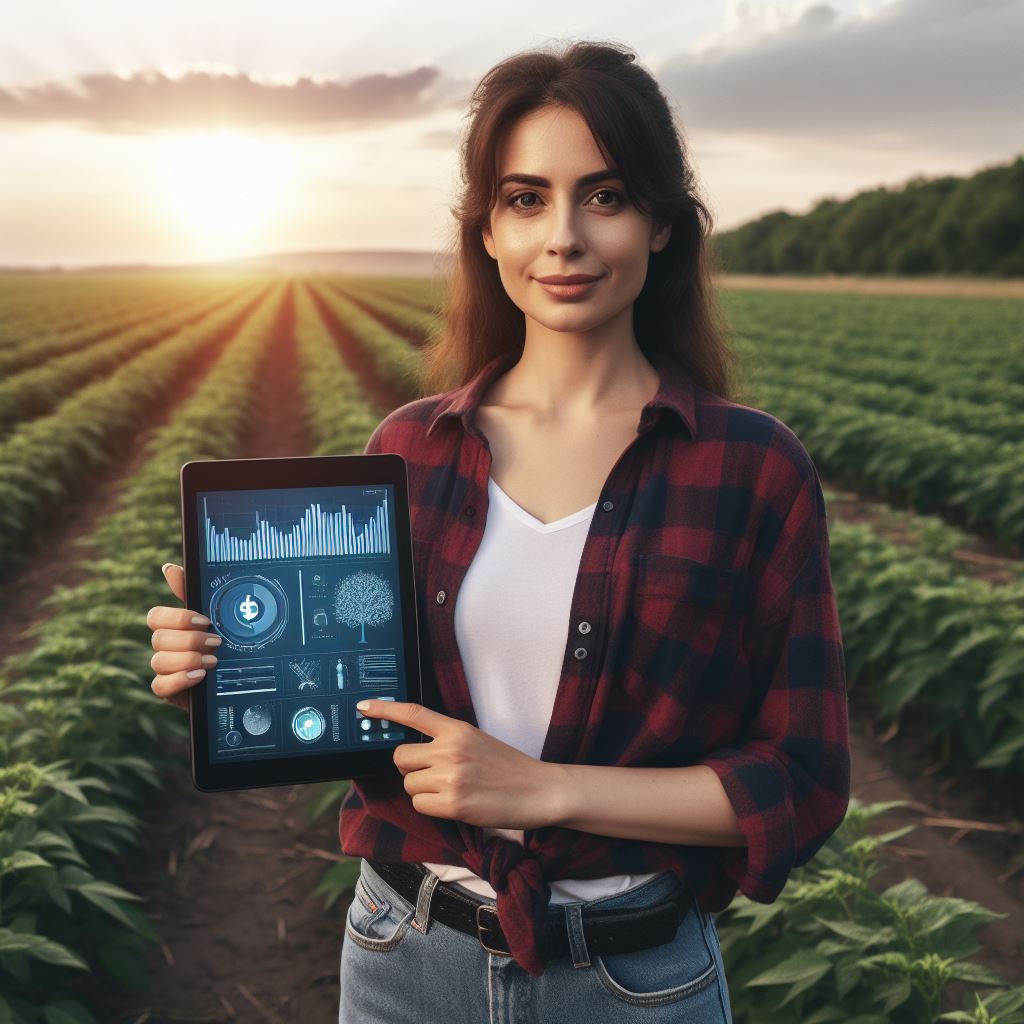Introduction
Urban Agri Tech Vertical Farming Trend: Cultivating crops in stacked layers indoors, vertical farming is a popular concept today.
This innovative farming method allows for the efficient use of space and resources, making it ideal for urban environments where land is limited.
Urban agriculture, including vertical farming, is gaining importance as cities grapple with the challenges of food production and resource scarcity.
With the world’s population projected to reach 9.7 billion by 2050, traditional agricultural practices are no longer sustainable.
Urban farming offers a solution by bringing food production closer to where it is consumed, reducing transportation costs and carbon emissions.
The agri-tech trend in vertical farming encompasses a range of innovative technologies.
These include hydroponics, which involves growing plants in nutrient-rich water without soil, and aeroponics, where plants are grown in a misty environment.
Controlled environments, such as climate-controlled greenhouses and vertical farms equipped with LED lighting, enable year-round crop cultivation, independent of weather conditions.
Additionally, automation and data analytics play a crucial role in agri-tech.
Robotics and AI technologies are used for tasks like seed planting, harvesting, and pest control, increasing productivity and reducing labor costs.
Advanced sensors and data analytics provide valuable insights into crop growth and allow for precision farming, optimizing resource allocation and minimizing waste.
In general, vertical farming and urban agriculture are rapidly gaining importance as the world faces the challenges of population growth and resource scarcity.
The agri-tech trend in this field offers innovative solutions for sustainable and efficient crop cultivation in urban environments.
With ongoing advancements in technology, vertical farming has the potential to revolutionize agriculture and shape the future of food production.
Benefits of Vertical Farming
Maximizing limited space in urban areas
- Vertical farming allows for the efficient use of vertical space, maximizing crop production.
- By utilizing tall buildings or indoor spaces, urban areas can produce a significant amount of food.
- With vertical farming, even small areas can contribute to feeding the growing urban population.
Reducing transportation and carbon footprint
- By growing food in urban areas, the need for long-distance transportation is reduced.
- This reduces the carbon emissions associated with transporting produce from rural farms.
- Vertical farming also eliminates the need for packaging and refrigeration during transportation.
Efficient use of water and resources
- Vertical farming uses hydroponic or aeroponic systems that minimize water usage.
- The water is recirculated within the system, reducing wastage and conserving this precious resource.
- Nutrient-rich water is supplied directly to the roots, resulting in faster growth and higher yields.
Year-round crop production
- Traditional farming is limited by seasons and weather conditions, but vertical farming is not.
- With controlled environments, crops can be grown all year round, ensuring a consistent food supply.
- This reduces dependency on seasonal crops and the risk of shortages or price fluctuations.
Resilience to climate change and natural disasters
- Vertical farming provides insulation against climate change risks such as extreme weather events.
- Indoor or greenhouse settings protect crops from harsh environmental conditions.
- In case of natural disasters, vertical farms can quickly resume production and provide food security.
Overall, vertical farming offers numerous advantages that make it a compelling solution for urban agriculture.
Through maximizing limited space, reducing transportation needs, and minimizing water usage, this innovative approach proves efficient.
Additionally, the ability to produce crops year-round, regardless of weather conditions, and the resilience it offers against climate change and natural disasters ensure a reliable food supply.
As urban populations continue to grow and the strain on traditional agriculture practices intensifies, vertical farming presents a sustainable and practical solution for the future of farming.
Read: Global Market Trends for Farmers
Vertical Farming Techniques
Vertical farming is a revolutionary method of cultivating plants in vertically stacked layers.
Here are some techniques that enable the success of vertical farming:
Hydroponics
By adopting hydroponics, vertical farms eliminate the need for soil, reducing soil erosion and the use of harmful pesticides.
This makes vertical farming an environmentally sustainable alternative with a lower carbon footprint.
Aeroponics
Aeroponics further enhances resource efficiency, as it requires only a fraction of the water consumed in traditional farming.
Additionally, vertical farming reduces transportation costs and eliminates the need for long-distance shipping, contributing to the local economy.
Aquaponics
Aquaponics combines fish farming and plant cultivation, creating a symbiotic relationship that maximizes resource usage.
The fish waste serves as a natural fertilizer for the plants, while the plants provide a clean and filtered environment for the fish.
Artificial Lighting and Controlled Environment Systems
Artificial lighting and controlled environment systems allow vertical farms to optimize plant growth by adjusting light spectrum, intensity, and photoperiod.
This ensures consistent and high-quality crop yields throughout the year, minimizing dependence on seasonal fluctuations.
Integration of Automation and Robotics
Lastly, the integration of automation and robotics in vertical farms increases productivity and reduces labor costs.
These technologies enable precise monitoring, timely adjustments, and efficient management, ultimately leading to higher crop yields and profitability.
Basically, vertical farming techniques such as hydroponics, aeroponics, aquaponics, artificial lighting, and automation have transformed urban agriculture.
These methods offer sustainable and cost-effective solutions that address the challenges of limited space, resources, and climate change.
Read: Agri-Tech: Revolutionizing Farming
Transform Your Agribusiness
Unlock your farm's potential with expert advice tailored to your needs. Get actionable steps that drive real results.
Get StartedSuccessful Vertical Farming Projects
Vertical farming has gained immense popularity in recent years, with several successful projects emerging worldwide.
These ventures have demonstrated the tremendous potential of urban agri-tech and its ability to revolutionize the food industry.
Gotham Greens in New York City
One notable success story is Gotham Greens, an innovative vertical farming company based in New York City.
With a focus on sustainable agriculture, Gotham Greens operates multiple commercial-scale greenhouse facilities spread throughout the city.
Their cutting-edge technology allows them to grow high-quality, pesticide-free produce year-round, satisfying the demand for fresh, locally sourced food.
Vertical Harvest in Jackson, Wyoming
Another remarkable project is Vertical Harvest in Jackson, Wyoming.
This three-story vertical farm is built on a small plot of land and utilizes hydroponic systems to cultivate a variety of crops.
Despite its limited space, Vertical Harvest produces an impressive amount of vegetables, providing the local community with fresh and nutritious produce while minimizing transportation costs.
Sky Greens in Singapore
In Singapore, Sky Greens has established itself as a leading player in the vertical farming industry.
This innovative project utilizes patented vertical farming systems, where rotating tiers of plants are exposed to natural sunlight through a greenhouse structure.
Sky Greens has successfully addressed the limited agricultural land issue in Singapore, ensuring a sustainable and efficient food production system.
AeroFarms in Newark, New Jersey
AeroFarms, based in Newark, New Jersey, is another remarkable vertical farming project worth mentioning.
This venture combines cutting-edge technology with sustainable farming practices, allowing them to grow crops in an indoor vertical environment without the use of soil.
AeroFarms’ proprietary aeroponic growing method maximizes water and nutrient efficiency, resulting in high yields of nutritious produce.
These successful vertical farming projects share some common characteristics that have contributed to their accomplishments.
They prioritize sustainability, utilizing energy-efficient systems and reducing water usage.
Additionally, their indoor farming environments provide optimal conditions for crop growth without relying on pesticides or herbicides.
The proficiency of these projects can be attributed to their integration of advanced technologies.
These include automated irrigation systems, LED lighting, climate control systems, and data analytics to optimize crop production.
By harnessing the power of artificial intelligence, these vertical farms can monitor and adjust environmental conditions in real-time, ensuring optimal growth and minimizing resource waste.
Moreover, these projects are making a significant impact on food availability.
Vertical farming eliminates the need for vast expanses of land, enabling cultivation in densely populated urban areas.
By bringing food production closer to consumers, transportation costs and carbon emissions associated with long-distance shipping are significantly reduced.
This contributes to a more sustainable and resilient food system, ensuring that fresh and nutritious produce is readily available to urban populations.
In a nutshell, successful vertical farming projects such as Gotham Greens, Vertical Harvest, Sky Greens, and AeroFarms showcase the immense potential of urban agri-tech.
These ventures have revolutionized the food industry by utilizing sustainable practices, advanced technology, and efficient resource management.
As vertical farming continues to evolve, it holds the key to addressing challenges like food security, resource scarcity, and climate change, paving the way for a more sustainable future.
Read: Navigating Finance in Agribusiness

Barriers and Challenges in Vertical Farming
High startup costs and investments
- Vertical farming requires significant initial capital and ongoing investments for infrastructure and technology.
- Expenses include the purchase of growing systems, lighting, automation, air conditioning, and hydroponics equipment.
- Securing funding for vertical farming projects can be challenging due to the high costs involved.
- Investors may be hesitant to commit to an industry that is relatively new and untested.
Energy consumption and electricity costs
- Vertical farms rely heavily on artificial lighting, which consumes a substantial amount of energy.
- The cost of electricity can be a major hurdle for vertical farmers, impacting their profitability.
- Energy-efficient technologies and renewable energy sources can help address this challenge.
- Investing in solar panels or wind turbines can reduce the dependence on the grid and lower operational costs.
Limited crop variety and food safety concerns
- Vertical farming is more suitable for certain crops, such as leafy greens and herbs, limiting crop variety.
- Expanding the range of crops that can be successfully grown in vertical farms remains a challenge.
- Food safety is a concern due to the enclosed environment, as any contamination can quickly spread.
- Developing effective quality control measures and implementing strict hygiene practices are essential.
Regulatory hurdles and zoning restrictions
- Regulatory frameworks and zoning laws may not be adapted to the unique requirements of vertical farming.
- Vertical farms often face challenges in obtaining permits and complying with regulations.
- Zoning restrictions may prevent vertical farms from being established in urban areas.
- Collaboration with policymakers and advocating for updated regulations can help overcome this barrier.
Lack of public awareness and misconceptions
- Many people are not familiar with vertical farming and its potential benefits.
- There may be misconceptions about the quality, taste, and nutritional value of vertical farm produce.
- Raising public awareness about the advantages of vertical farming is crucial.
- Education campaigns and partnerships with local communities can help address this challenge.
Read: Effective Marketing for Modern Farmers
Future Prospects and Potential Impact
Growing market demand for locally grown produce
The concept of vertical farming aligns perfectly with the increasing consumer demand for locally grown and fresh produce.
With concerns about the carbon footprint of long-distance transportation and the use of pesticides in traditional farming, urban agriculture offers a sustainable and eco-friendly alternative.
By cultivating crops within city limits, vertical farming eliminates the need for lengthy supply chains, reducing transportation costs and environmental impact.
Collaboration with technology and software industries
Vertical farming heavily relies on the integration of technology and software solutions to optimize production efficiency.
This opens up opportunities for collaboration between the agricultural and tech industries, resulting in improved farming techniques, automation, and data-driven decision-making.
Advanced sensors, cloud computing, and data analytics enable vertical farmers to monitor and control various parameters that affect crop growth, such as temperature, humidity, and light intensity.
Supporting sustainable food systems and food security
Vertical farming has the potential to revolutionize food production by supporting sustainable agriculture practices.
With limited arable land available for traditional farming methods, urban agriculture offers a solution to maximize land use and minimize the ecological impact.
Additionally, vertical farms can operate year-round, providing a continuous supply of fresh produce regardless of seasonal limitations.
This contributes to enhancing food security in urban areas and reduces dependency on external food sources.
Integration with smart cities and urban planning
As cities continue to embrace smart technologies and sustainable urban planning, vertical farming can serve as a crucial component in building resilient and self-sufficient communities.
The integration of vertical farms within urban landscapes can transform underutilized spaces, such as abandoned buildings and rooftops, into productive agricultural areas.
Moreover, the proximity of vertical farms to urban populations enables the concept of farm-to-table agriculture, creating a direct and transparent supply chain while reducing carbon emissions.
Adapting to future urban population growth
The world’s population is rapidly urbanizing, with an increasing number of people living in cities.
Vertical farming presents a viable solution to meet the growing food demands of urban populations.
By utilizing vertical space efficiently, it is possible to produce a significant amount of food within city limits, reducing the pressure on rural areas and ensuring the availability of fresh produce for an expanding urban population.
Generally, vertical farming holds immense potential for the future.
The growing market demand for locally grown produce, coupled with collaborations between the agricultural and tech industries, highlights the prosperous prospects of urban agri-tech.
Furthermore, the widespread adoption of vertical farming can support sustainable food systems, integrate with smart cities, and adapt to future urban population growth, ultimately fostering a greener and more food-secure world.
Conclusion
A recap of vertical farming’s benefits and challenges reveals its immense potential in the field of urban agri-tech.
The numerous advantages such as efficient space utilization, reduced reliance on traditional agriculture, and year-round crop production make vertical farming an attractive solution for addressing food security and sustainability challenges.
However, it is important to acknowledge the challenges associated with vertical farming, including high initial investment costs, energy consumption, and technical expertise required to operate these systems effectively.
Despite these challenges, the urban agri-tech trend holds great promise.
The ability to grow food in urban areas close to consumers not only reduces transportation costs and carbon emissions but also promotes local food production and strengthens community resilience.
Therefore, it is crucial to encourage further research and development in the field of vertical farming.
By investing in innovative technologies and supporting knowledge-sharing platforms, we can overcome the existing challenges and unlock the full potential of this sustainable farming method.
In closing, vertical farming represents a revolutionary approach to agriculture, offering numerous benefits and addressing critical environmental concerns.
By embracing urban agri-tech and promoting its growth, we can pave the way for a more sustainable and secure food future.




